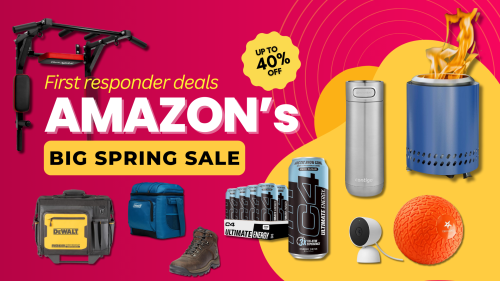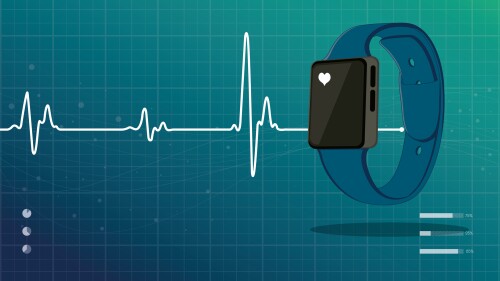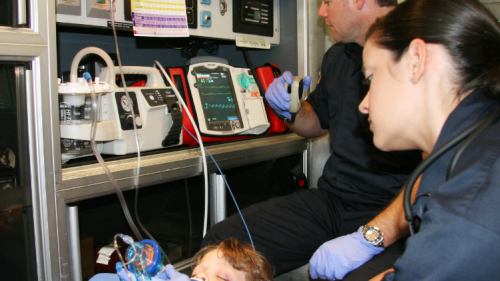BREAKING NEWS
The “She Drives Act,” would require the NHTSA to include advanced female dummies, aiming to close a safety gap in how cars are rated and approved
Wellness programs are expanding as dispatch centers race to adopt artificial intelligence, new tech tools and stronger retention models
With more than 60 open paramedic and EMT positions, the city is piloting telemedicine and nurse diversion programs while preparing a new recruitment push
A department review found paramedics and EMTs followed recommended chest pain procedures in just 13.2% of cases
Chief Robert Perko says delayed 911 calls and lack of oversight among volunteer responders have led to communication breakdowns and risk to patient care
EXCLUSIVES
The uniform doesn’t come with a manual for pet ownership — this might help
SPECIAL REPORTS
PRODUCT RESEARCH CATEGORIES
The EMS1 Medical Equipment Services product category features information for researching EMS Medical Equipment Services, covering a variety of service programs and repair options for medical equipment.
The EMS1 Ambulance Disposable Supplies product category features information, product listings and resources for researching Ambulance Disposable Supplies.
The Dispatch Equipment product category features information and resources for researching Dispatch Equipment, including purchasing guides and a full directory of dispatch equipment manufacturers and distributors.
The EMS1 telehealth product category features information, product listings and resources for researching telehealth, including equipment, software and accessories, for EMS providers and EMS industry leaders.
The EMS1 Vehicle Accessories product category is a collection of products and information for researching EMS Vehicle Accessories and covers a variety of products, including consoles, mounts, emergency lights and laptops.
Ambulances and specialty vehicles are crucial for delivering emergency medical services (EMS) in diverse environments, ranging from urban settings to remote areas. This topic covers vehicle types, configurations, design standards, and customization options for specific missions such as critical care transport, bariatric response, and tactical EMS. Understanding the capabilities and limitations of different vehicles enables agencies to select the most suitable platform for their specific needs. Vehicle safety, maintenance, and procurement are also explored. For details on enhancing vehicle functionality, see Ambulance Accessories. Explore the articles in this topic to learn more about selecting and managing EMS response vehicles.
Training simulators are key tools for building EMS skills through realistic, scenario-based learning. This topic covers high- and low-fidelity simulators used to practice airway management, trauma care, cardiac response, and other critical interventions. Simulators help EMS personnel improve decision-making, teamwork, and clinical performance in a controlled environment. They also support certification, recertification, and ongoing education. For additional resources used in EMS training, see Training Equipment & Supplies. Explore the articles in this topic to learn how simulators enhance the quality and effectiveness of EMS training programs.
Ambulance accessories play a key role in supporting EMS providers during emergency response, patient transport, and on-scene care. This topic covers essential tools and equipment such as oxygen storage systems, interior lighting, stretcher mounts, communication devices, and safety restraints. Reliable ambulance accessories help improve efficiency, protect patients and crew, and maintain readiness for all types of calls. Understanding what accessories are available—and how to use them—can support better outcomes in the field.
The EMS1 EMS Communications product category features products and information for researching EMS communications.
INDUSTRY INSIGHTS
Learn how the company’s AdvanceClaim software maximizes billing accuracy by reducing redundancy and human error
Discover why the departments that treat recruiting like marketing are winning — and how to follow their lead
Learn how public safety agencies can overcome recruitment roadblocks with real-world strategies rooted in leadership, transparency and cultural change
Every time we take our hands off the chest, perfusion pressure — and the chances of ROSC — drops
Learn why outcome-based leadership is crucial for making meaningful changes in your agency and community
UPCOMING & ON-DEMAND EVENTS
What if scheduling and finalizing a transport could be done in 60 seconds?
Learn common triggers, assessment findings, and the different phases and classifications of seizures
Key findings from the Verizon Frontline Public Safety Communications survey
A detailed look at the actions leaders can take to implement a systems-level plan to protect their members
Adopting programs to improve EMS service delivery and agency culture
Takeaways from Dr. Tan and Chief Wylie on training and communicating to deploy rescue task forces, unified command and casualty collection points
Wolfberg and Wirth on how to avoid legal pitfalls
Saving lives with coordinated trauma care through pre-planning, training and relationship building
Join guests Ed Racht and Rhonda Kelly in this episode of Inside EMS
This informative webinar will provide key information on how two public safety agencies (one police and one fire) funded comprehensive smartphone programs that provided issued devices to all personnel.
This webinar covers stroke assessment, recognition and timely decision-making as to where to transport a patient for intervention
Real-world, practical methods for identification, assessment and field treatment of life-threatening sepsis









































